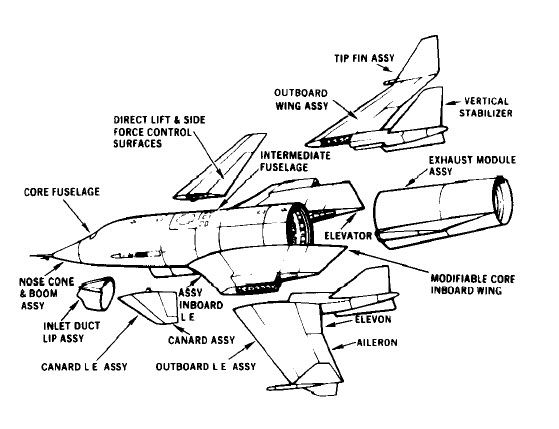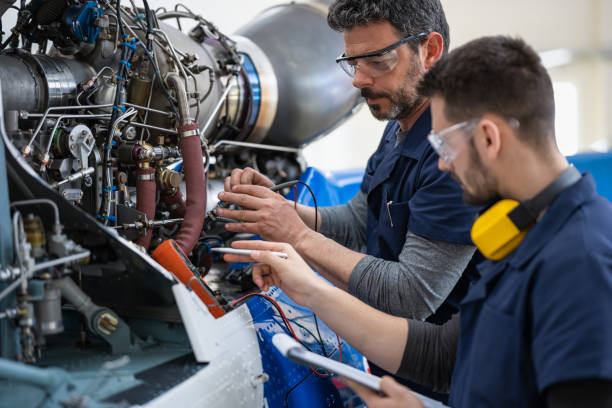 The magic of flight captivates the human spirit, and behind this enchantment stands the meticulous work of aeronautical engineers. These unsung heroes, armed with technical prowess and a commitment to safety, play a critical role in the aviation industry. This blog will provide an in-depth exploration of the daily routine checkups that aeronautical engineers undertake before an aircraft gracefully takes to the skies.
The magic of flight captivates the human spirit, and behind this enchantment stands the meticulous work of aeronautical engineers. These unsung heroes, armed with technical prowess and a commitment to safety, play a critical role in the aviation industry. This blog will provide an in-depth exploration of the daily routine checkups that aeronautical engineers undertake before an aircraft gracefully takes to the skies.
Who Are Aeronautical Engineers?
Aeronautical engineers are professionals specialising in the design, development, and maintenance of aircraft and spacecraft. Tasked with ensuring the safety and efficiency of flight, they focus on aerodynamics, materials, propulsion, and systems integration. Aeronautical engineers contribute to aircraft design, conduct tests for performance evaluation, and collaborate with maintenance teams. They play a pivotal role in aerospace research, staying abreast of technological advancements, and adhering to regulatory standards to certify aircraft safety. Employed by aerospace companies, government agencies, and research institutions, aeronautical engineers drive innovation in aviation, shaping the future of air travel and space exploration.
Routine Tasks Of An Aeronautical Engineers
Aeronautical engineers are associated with the conceptualization and design of aircraft. This includes considerations for aerodynamics, materials, propulsion systems, avionics, and overall structural integrity. While aeronautical engineers are not typically the ones conducting daily routine checkups before a flight, they are involved in designing maintenance procedures and providing expertise to maintenance teams. They may also analyse data from post-flight inspections to identify potential improvements or issues. Here is a quick dip in the daily routine of an Aeronautical engineer.
Dawn of a New Day
The day begins early for aeronautical engineers. In the predawn light, they converge on hangars, laboratories, and control rooms, ready to engage with the complex choreography that ensures the safety and reliability of every flight. Their work spans a continuum, from the design phase to the day-to-day operations, ensuring that the miracle of flight remains as safe as it is awe-inspiring.
Designing Dreams
Long before an aircraft taxis down the runway, aeronautical engineers are engrossed in the art and science of design. They sculpt the wings, shape the fuselage, and breathe life into the intricate systems that constitute a modern aircraft. Each decision, from material selection to aerodynamic considerations, is made with an unwavering commitment to safety. The day-to-day routine begins with a reflection on these foundational choices.
Bridging the Gap
Aeronautical engineers are not solitary architects; they are collaborators in a symphony of expertise. Before the flight, they engage in intense collaboration with maintenance teams. These teams, often working hands-on with the aircraft, rely on the engineers’ insights to understand the intricate details of the systems they will inspect. Together, they bridge the gap between design and operation, ensuring that theoretical excellence transforms seamlessly into tangible safety.
Preparing for the Precision Dance:
As the flight’s departure time approaches, aeronautical engineers turn their attention to the meticulous preparations for the pre-flight checks. This involves an exhaustive review of the maintenance schedule, inspection protocols, and adherence to regulatory standards. It’s a precision dance where every step is choreographed to perfection, leaving no room for oversight.
Eyes in the Sky
Aeronautical engineers leverage cutting-edge monitoring systems and data analytics to keep a watchful eye on the health of the aircraft. Real-time data streams are scrutinised for any deviations from the norm. This continuous monitoring is not just a preflight ritual; it’s a 24/7 commitment to ensuring that the aircraft remains in optimal condition for its journey into the vast expanse above.
Systems Integration
The complexity of a modern aircraft is staggering, with numerous systems working in harmony. Aeronautical engineers play a crucial role in defining and refining the standard operating procedures for systems integration checks. These checks are the final rehearsal before the aircraft takes centre stage in the sky. Engineers meticulously scrutinise the interactions between avionics, hydraulics, propulsion, and countless other systems to ensure seamless cooperation.
Stress Testing the Mettle
Aircraft components are subjected to rigorous stress testing to emulate the demanding conditions they will face during flight. The goal is to push materials and structures to their limits, guaranteeing that they can withstand the forces of gravity, turbulence, and varying temperatures. Aeronautical engineers design and oversee these stress tests, leaving nothing to chance.
Certification and Compliance
Ensuring that an aircraft complies with stringent aviation regulations and safety standards is a cornerstone of aeronautical engineering. Engineers work diligently to shepherd the aircraft through the certification process, collaborating with regulatory authorities to guarantee that every nut, bolt, and line of code meets the criteria for airworthiness. The daily routine includes meticulous documentation and scrutiny, leaving no room for ambiguity.
Final Countdown
As the aircraft stands poised on the runway, ready for departure, aeronautical engineers take a collective breath. Their work is embedded in every rivet and circuit, and now it’s time to witness the culmination of their efforts. The pre-flight checks are a final countdown, a series of checkpoints that affirm the readiness of the aircraft for the journey ahead.
Post-Flight Reflection
The responsibilities of aeronautical engineers extend beyond takeoff. In the aftermath of each flight, engineers engage in post-flight analysis. They pore over data, scrutinise performance metrics, and assess the wear and tear on components. This post-flight reflection is not just a retrospective exercise; it’s a forward-looking endeavour, informing future design improvements and maintenance protocols.
Conclusion
The daily routine checkups of aeronautical engineers represent a harmonious blend of science, precision, and dedication. From the design studios to the hangars, these professionals are the guardians of aviation safety. Their work, often unseen by the passengers who entrust their lives to the skies, ensures that every flight is a testament to the meticulous craftsmanship that defines aeronautical engineering. As we look up and marvel at the aircraft gracefully piercing the clouds, let’s also take a moment to appreciate the engineers who make this breathtaking spectacle a daily reality. If you are an aeronautical engineering aspirant and wish to know more about the nitty gritties of the career visit us at ACS College of Engineering.


